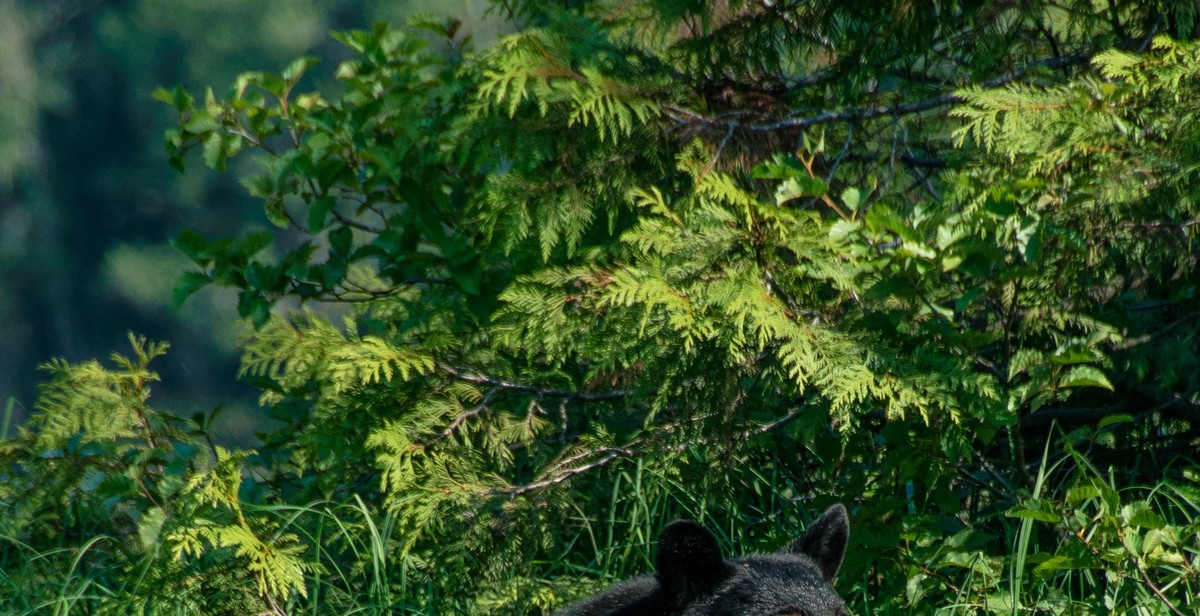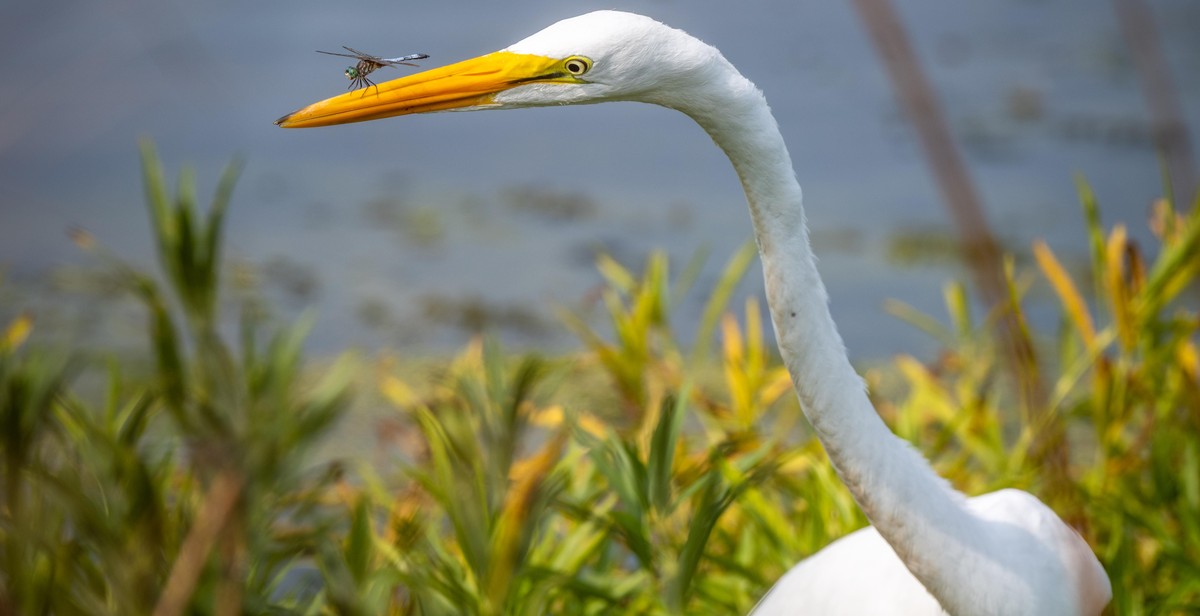How to Protect and Preserve Lake Wildlife: Conservation Tips for Nature Enthusiasts
There is an undeniable beauty that comes with the presence of a lake. The calming sound of the water, the lush greenery that surrounds it, and the diverse wildlife that inhabits it all contribute to its allure. However, with the increasing human activities around lakes, the natural balance of these ecosystems is being threatened. This is why lake wildlife conservation is important.
Why is Lake Wildlife Conservation Important?
Lake wildlife conservation is crucial for maintaining the delicate balance of the ecosystem. The wildlife that inhabits lakes, from the smallest plankton to the largest fish, plays an important role in the food chain and the overall health of the lake. Additionally, lakes are often a source of water for human consumption and agricultural use, making it even more important to preserve the quality of the water and protect the wildlife that lives in it.
Conservation efforts can help prevent the extinction of species, protect biodiversity, and preserve the natural beauty of the area. As a nature enthusiast, it is our responsibility to do our part in protecting and preserving lake wildlife.
What are the Conservation Tips for Nature Enthusiasts?
- Practice responsible fishing by following catch and release guidelines
- Dispose of waste properly to prevent pollution
- Avoid using harmful chemicals and pesticides near the lake
- Support conservation efforts by volunteering or donating to organizations that work to protect lake wildlife
By following these simple tips, we can all contribute to the preservation of lake wildlife and ensure that future generations can enjoy the beauty of these ecosystems.

Understanding Lake Ecosystems
A lake ecosystem is a complex interdependent system that includes living and non-living components. It is a delicate balance of various species of plants, animals, and microorganisms that interact with each other and the environment in which they live. The ecosystem of a lake is determined by the physical, chemical, and biological factors that influence its functioning.
The Importance of Biodiversity in Lake Ecosystems
Biodiversity is essential for the proper functioning of lake ecosystems. The variety of species in a lake provides stability to the ecosystem, as each species plays a crucial role in maintaining the balance. For example, plants provide oxygen and food for animals, while animals help to control the population of other species. The loss of a single species can have a ripple effect throughout the ecosystem, leading to imbalances and potentially causing harm to other species.
Furthermore, biodiversity in lake ecosystems provides numerous benefits to humans, such as recreational opportunities, water filtration, and food sources.
Factors Affecting Lake Ecosystems
There are various factors that can affect the health and functioning of a lake ecosystem. Some of these factors include:
- Water Quality: The quality of the water in a lake is critical to the survival of its inhabitants. Pollution and nutrient runoff can lead to harmful algal blooms, fish kills, and other negative impacts.
- Climate Change: Changes in temperature, precipitation, and weather patterns can have significant impacts on lake ecosystems, including changes in the distribution and abundance of species.
- Human Activities: Human activities, such as development, agriculture, and recreation, can impact lake ecosystems through habitat destruction, pollution, and the introduction of invasive species.
- Natural Disasters: Events such as floods, droughts, and wildfires can have significant impacts on lake ecosystems, including changes in water levels, nutrient cycling, and habitat availability.
Understanding the factors that affect lake ecosystems is crucial for developing effective conservation strategies to protect and preserve these valuable resources.

Threats to Lake Wildlife
Lake wildlife faces various threats that can significantly impact their habitat and survival. Here are some of the most common threats:
Pollution
Pollution is a significant threat to lake wildlife. Human activities such as industrialization, agriculture, and urbanization have led to an increase in pollution levels in lakes. Pollution can cause oxygen depletion in the water, making it difficult for aquatic animals to breathe. It can also cause the accumulation of harmful chemicals in the water, which can negatively affect the health of aquatic animals. For instance, oil spills can smother aquatic life, while chemical spills can cause reproductive problems and mutations in aquatic animals.
Climate Change
Climate change is another significant threat to lake wildlife. The increase in global temperatures is causing changes in lake ecosystems, such as changes in water temperature and water levels. This can affect the breeding patterns and behavior of aquatic animals, and some species may not be able to adapt to these changes. Climate change can also cause the spread of harmful algae blooms, which can be toxic to aquatic animals.
Overfishing
Overfishing is a significant threat to lake wildlife. Overfishing can lead to the depletion of fish populations, which can negatively affect the food chain and the survival of other aquatic animals. It can also lead to imbalances in the lake ecosystem, which can cause the spread of invasive species.
Invasive Species
Invasive species are non-native species that can cause harm to the native species in the lake ecosystem. Invasive species can outcompete native species for resources, such as food and habitat. They can also introduce new diseases and parasites to the lake ecosystem. Some invasive species, such as zebra mussels, can also cause damage to infrastructure, such as water intake pipes.
| Species | Impact |
|---|---|
| Zebra Mussel | Can clog water intake pipes and outcompete native species for resources |
| Asian Carp | Can outcompete native fish species for food and habitat |
| Curly-leaf Pondweed | Can form dense mats, which can interfere with boating and fishing |
It is essential to address these threats to protect and preserve lake wildlife. By taking action to reduce pollution, combat climate change, regulate fishing, and control invasive species, we can help ensure that lake wildlife thrives for generations to come.

Conservation Tips for Lake Wildlife
As a nature enthusiast, it is important to take steps to protect and preserve the lake wildlife. Here are some conservation tips:
Reduce, Reuse, and Recycle
One of the best ways to protect the lake wildlife is to reduce waste. By reducing, reusing, and recycling, we can decrease the amount of trash that ends up in the lake and its surrounding areas. It is important to properly dispose of all trash, including plastics and fishing lines, to prevent wildlife from getting entangled or ingesting it.
Proper Waste Disposal
Improper waste disposal can have a negative impact on the lake wildlife. It is important to dispose of hazardous materials, such as batteries and chemicals, properly. These materials can be toxic to the lake wildlife and the surrounding environment.
Use Eco-Friendly Products
Using eco-friendly products, such as biodegradable soaps and detergents, can help to reduce the amount of harmful chemicals that enter the lake. These products are designed to break down naturally and are less harmful to the environment.
Reduce Carbon Footprint
Reducing your carbon footprint can help to protect lake wildlife. Walking, biking, or using public transportation instead of driving can reduce the amount of carbon emissions that contribute to climate change. Climate change can have a negative impact on the lake wildlife and their habitat.
Support Conservation Efforts
Supporting conservation efforts can help to protect and preserve the lake wildlife. You can support local conservation organizations or volunteer to clean up the lake and its surrounding areas. These efforts can help to maintain the health and beauty of the lake ecosystem.
Practice Responsible Fishing
Fishing is a popular activity on the lake, but it is important to practice responsible fishing. This includes following fishing regulations and catch limits, using barbless hooks, and releasing fish back into the lake unharmed. This can help to maintain a healthy fish population and preserve the lake ecosystem.
Prevent the Spread of Invasive Species
Invasive species can have a negative impact on the lake ecosystem. It is important to prevent the spread of invasive species by cleaning boats and equipment before entering the lake, and not releasing live bait into the lake. This can help to maintain the natural balance of the lake ecosystem.
By following these conservation tips, we can help to protect and preserve the lake wildlife for future generations to enjoy.

Final Thoughts
Protecting and preserving lake wildlife is crucial for maintaining a healthy ecosystem and ensuring the survival of various species. As nature enthusiasts, it is our responsibility to take action and implement conservation tips to prevent further damage to our natural resources.
The Importance of Education and Awareness
One of the most critical steps in protecting lake wildlife is educating ourselves and others about the importance of conservation. By increasing awareness about the impact of human activities on the environment, we can encourage people to adopt more sustainable practices and reduce their carbon footprint.
Implementing Conservation Strategies
There are various conservation strategies that we can implement to protect lake wildlife, such as limiting our use of chemicals, reducing plastic waste, and supporting conservation organizations. By taking these actions, we can help preserve the delicate balance of the ecosystem and ensure that future generations can enjoy the beauty of nature.
Collaboration is Key
Protecting and preserving lake wildlife requires a collaborative effort from individuals, organizations, and governments. By working together, we can create a more sustainable future and protect our natural resources for generations to come.
